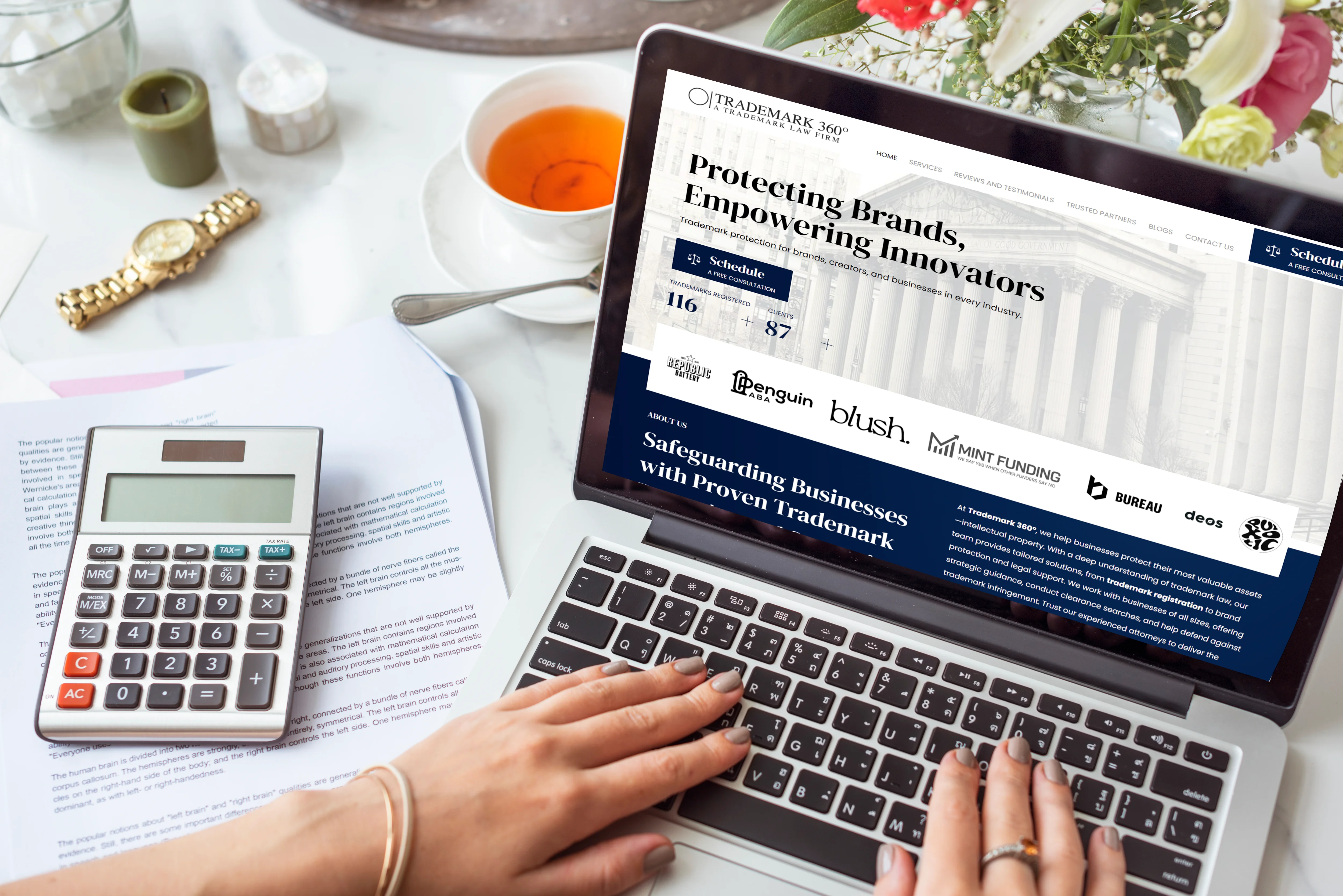You've successfully registered your trademark — congratulations! But don't make the common mistake of assuming your legal protection is permanent. Once a trademark is registered with the USPTO, the responsibility of maintaining and renewing it falls on you. If you fail to comply with ongoing requirements, your trademark rights can lapse. This guide will show you exactly how to maintain and renew your trademark to ensure your brand stays protected and enforceable.
Why Trademark Maintenance Matters
Trademark Protection Isn't Permanent
Once a trademark is registered, many businesses mistakenly believe the work is done. In reality, maintaining a trademark is an ongoing process. Neglecting trademark maintenance can cause your rights to expire, opening the door to infringers and brand confusion. Maintaining your trademark means proving continued use, meeting post-registration trademark requirements, and keeping your ownership claims legally valid.
Protecting Your Investment
Without consistent use and formal filings, your trademark can be canceled for non-use. This cancellation strips you of federal protection and the ability to enforce your mark against others. You must renew your trademark regularly to preserve trademark ownership protection, especially as your brand grows in value. Investors, partners, and customers all view active trademarks as signs of credibility and longevity. Understanding how to maintain a trademark and keeping up with corporate trademark maintenance obligations helps preserve long-term value.
Key Trademark Renewal Deadlines
Section 8 Declaration of Use (Years 5-6)
The USPTO requires trademark owners to file specific maintenance documents at set intervals. Knowing trademark renewal deadlines is essential for staying compliant. The first critical window comes five years after registration.
Between the fifth and sixth year, you must file a Section 8 declaration. This document confirms that your trademark is still being used in commerce. Submitting this declaration ensures that the USPTO doesn't presume abandonment of your mark. Filing a trademark declaration of use protects your registration from early cancellation.
Combined Section 8 & 9 (Year 10 and Every 10 Years Thereafter)
The next major deadline comes at the ten-year mark. Between the ninth and tenth years, and every ten years thereafter, you must file a combined Section 8 and Section 9 renewal. The Section 9 application formally requests renewal of your registration. Both filings together show continued use and intent to renew your trademark.
Grace Period and Risk of Cancellation
Missing these deadlines triggers a six-month trademark renewal grace period, during which you can still submit documents with an additional fee. However, if you fail to act during the grace period, your registration will be canceled. This forces you to re-register your trademark instead of simply continuing to renew your trademark, risking someone else claiming it first. To avoid that, learn how often you have to renew your trademark and stay organized.
What You'll Need to Renew
Registration Details and Specimen
When preparing to renew your trademark, it's important to have all the necessary documents and materials ready to avoid rejection or delays. First, you'll need your trademark registration number. This unique identifier allows the USPTO to pull up your record and process your maintenance filing. Next, a specimen of use must be submitted. This shows how your trademark is currently being used in commerce. Acceptable specimens include product packaging, online store pages showing the mark with purchase options, or advertisements with the mark displayed. The specimen should match the goods or services listed in your registration.
Forms and Filing Fees
You must complete and file the correct forms for each deadline. For the fifth-year filing, only the Section 8 form is needed. For the tenth year and beyond, the USPTO requires both the Section 8 and Section 9 forms. Each form is filed electronically through the TEAS system. Finally, make sure to include the correct filing fees. These vary depending on the number of classes in your trademark. Paying an incorrect amount or submitting incomplete forms could result in refusal or cancellation, making knowledge of the trademark renewal process essential.
What Happens If You Miss the Deadline?
Consequences of Delay
Missing a USPTO trademark renewal deadline can have serious consequences. The USPTO allows a six-month grace period following each deadline. During this period, you can still file your documents and renew your trademark, but you'll have to pay a late fee for each class of goods or services.
Cancellation and Re-registration Risk
If you fail to act before the end of the grace period, your trademark will be canceled. This means you lose all rights previously granted under federal law. A canceled trademark cannot be enforced against infringers, and you would need to start the registration process all over again. In some cases, a third party may even register your canceled trademark before you have a chance to reclaim it. That's why it's essential to understand how to renew trademark documents properly and on time.
Stay Ahead of Deadlines
Avoiding this situation is straightforward if you know how to renew a trademark and maintain accurate records. Mark your deadlines well in advance and keep all usage records up to date. Don't wait until the last minute. The USPTO does not offer any extensions beyond the grace period.
Tips to Stay Compliant
Schedule Calendar Reminders
Knowing your legal responsibilities is one thing; staying on top of them is another. To successfully renew your trademark on time and avoid lapses, you should implement a few strategic practices. First, set calendar alerts for your fifth and tenth year deadlines immediately after registration. Consider scheduling reminders at the beginning and midpoint of the relevant year. Keeping digital alerts tied to your email or practice management software can help you avoid missing a filing window.
Keep Proper Use Records
Second, keep a well-organized archive of trademark use. Save dated screenshots, packaging samples, invoices, and marketing materials that feature your mark. These records serve as future specimens and also help prove continuous use if your ownership is ever challenged.
Monitor Unauthorized Use
Monitoring unauthorized use of your mark is another vital part of trademark monitoring. Regular searches of the marketplace or monitoring services can help you identify infringers early. Taking quick action to stop such use helps protect and renew your trademark with legal strength intact.
Work With Professionals
Finally, consider working with a trademark attorney or professional trademark renewal service. Experts can track deadlines, prepare documentation, and ensure all filings meet USPTO standards. This is particularly useful for businesses managing a portfolio of marks or international trademarks. They can also advise you on how to keep a trademark active and legally defensible.
Bonus: What is Section 15 (Optional Filing)?
Incontestability Status
In addition to mandatory filings, there is one optional document that can significantly strengthen your legal rights: the Section 15 Declaration of Incontestability. Though not required for maintenance, it can enhance your trademark's legal standing. This filing is available once your trademark has been in continuous use for five years after registration. If granted, it makes your trademark "incontestable," meaning it cannot be challenged on certain grounds such as descriptiveness. In legal disputes, incontestable marks are much easier to enforce.
Filing a Section 15 declaration demonstrates that your mark has gained recognition in the market and reduces the chance of losing rights in court. While not required as part of US trademark renewal, it's highly recommended for core brand assets.
How Trademark 360° Can Help
Support for Complex Filings
The rules around how and when to renew your trademark can be complex. Even a small oversight can lead to canceled rights and brand damage. That's where Trademark 360° comes in. Our team helps you renew your trademark through every step of the process.
What We Offer
We offer timely reminders for all upcoming deadlines so you never miss a critical date. Our legal team helps prepare and file all required documents, ensuring compliance with every USPTO rule. We also offer trademark renewal services to help you renew your trademark, track usage, monitor threats, and get legal advice tailored to your business.
Expertise at Your Side
Whether you're learning how to renew a trademark registration for the first time or managing multiple marks, Trademark 360° simplifies the process and protects your assets.
Maintain Long-Term Protection
A trademark is not a one-and-done registration. It requires ongoing attention and compliance. By understanding deadlines, preparing the right documents, and staying vigilant, you can successfully renew your trademark and preserve your brand's identity.
Remember, your trademark's power lies in your commitment to renew your trademark and protect it. Don't let your rights lapse due to missed deadlines or overlooked requirements. Invest in smart maintenance strategies today to ensure your brand continues to thrive tomorrow.
Let Trademark 360° handle your renewals so you never miss a deadline.
Powered by Froala Editor












